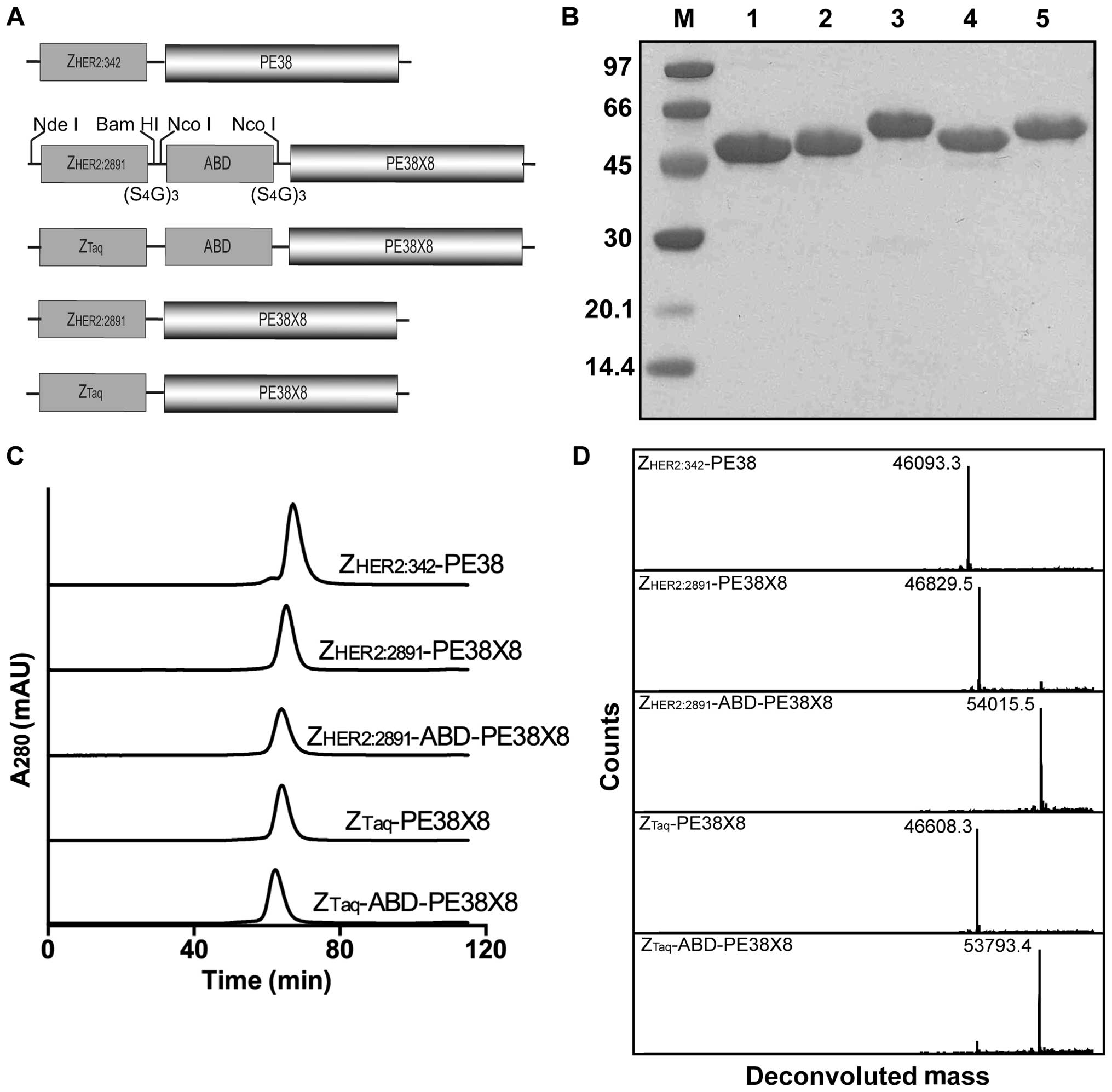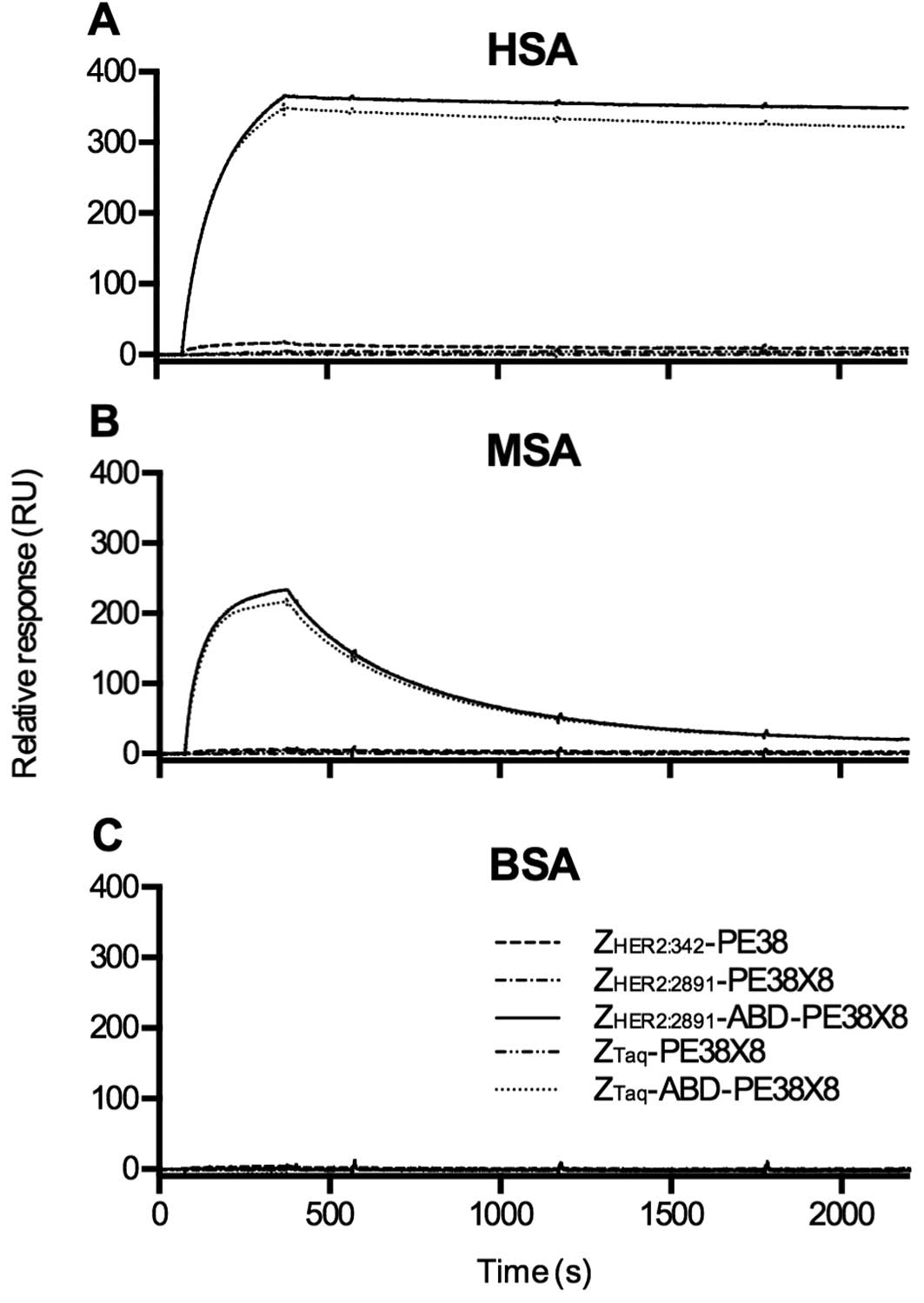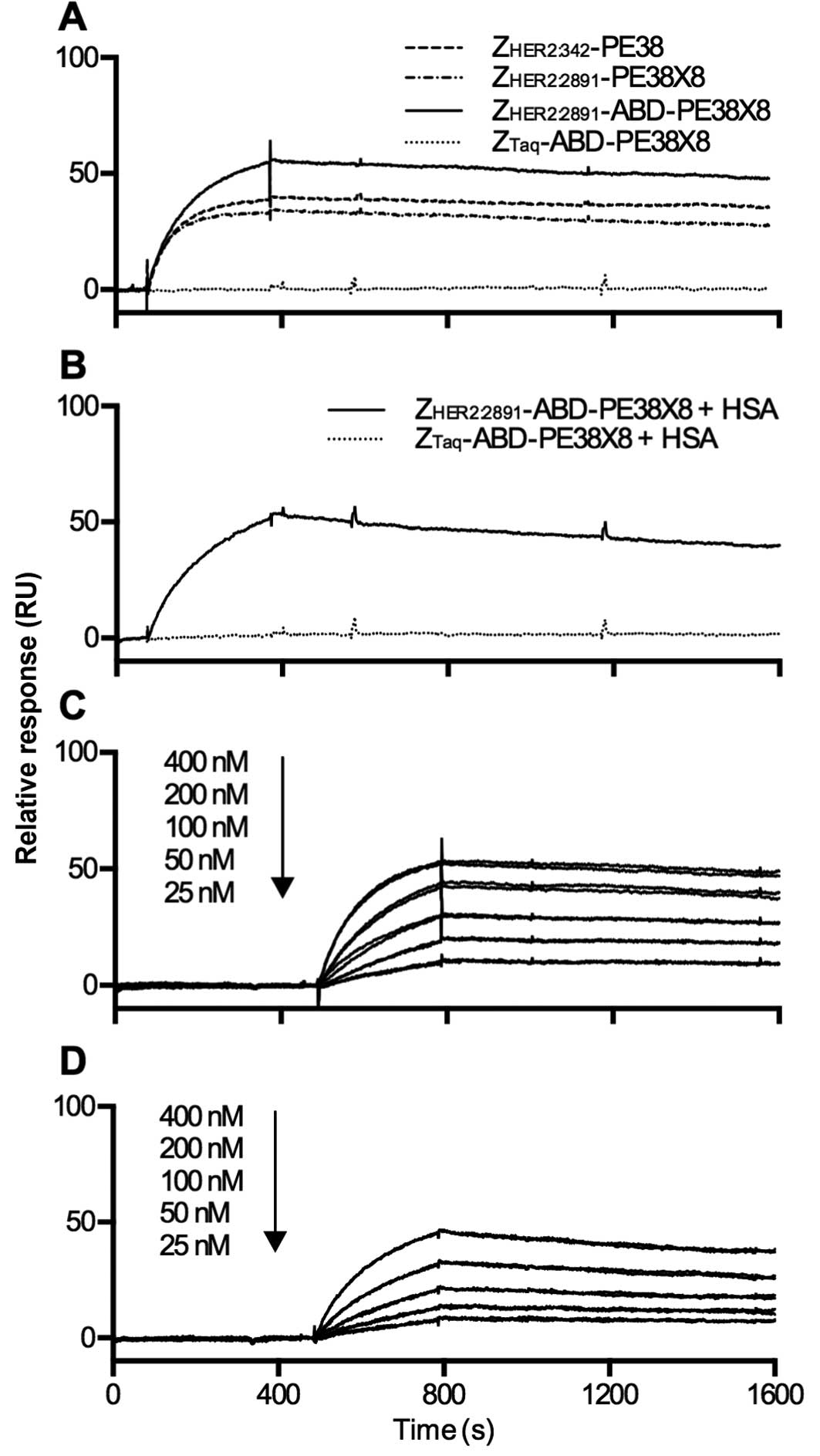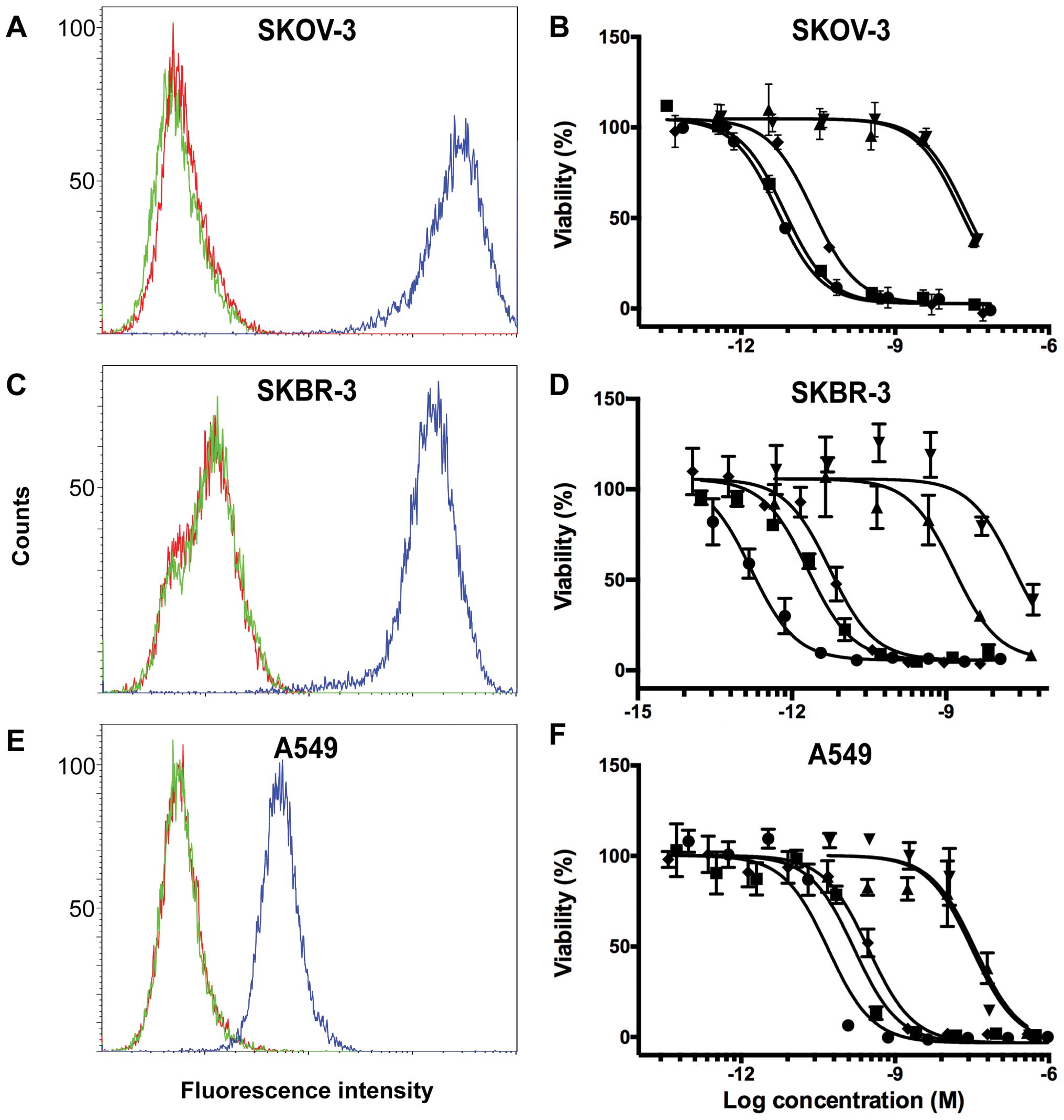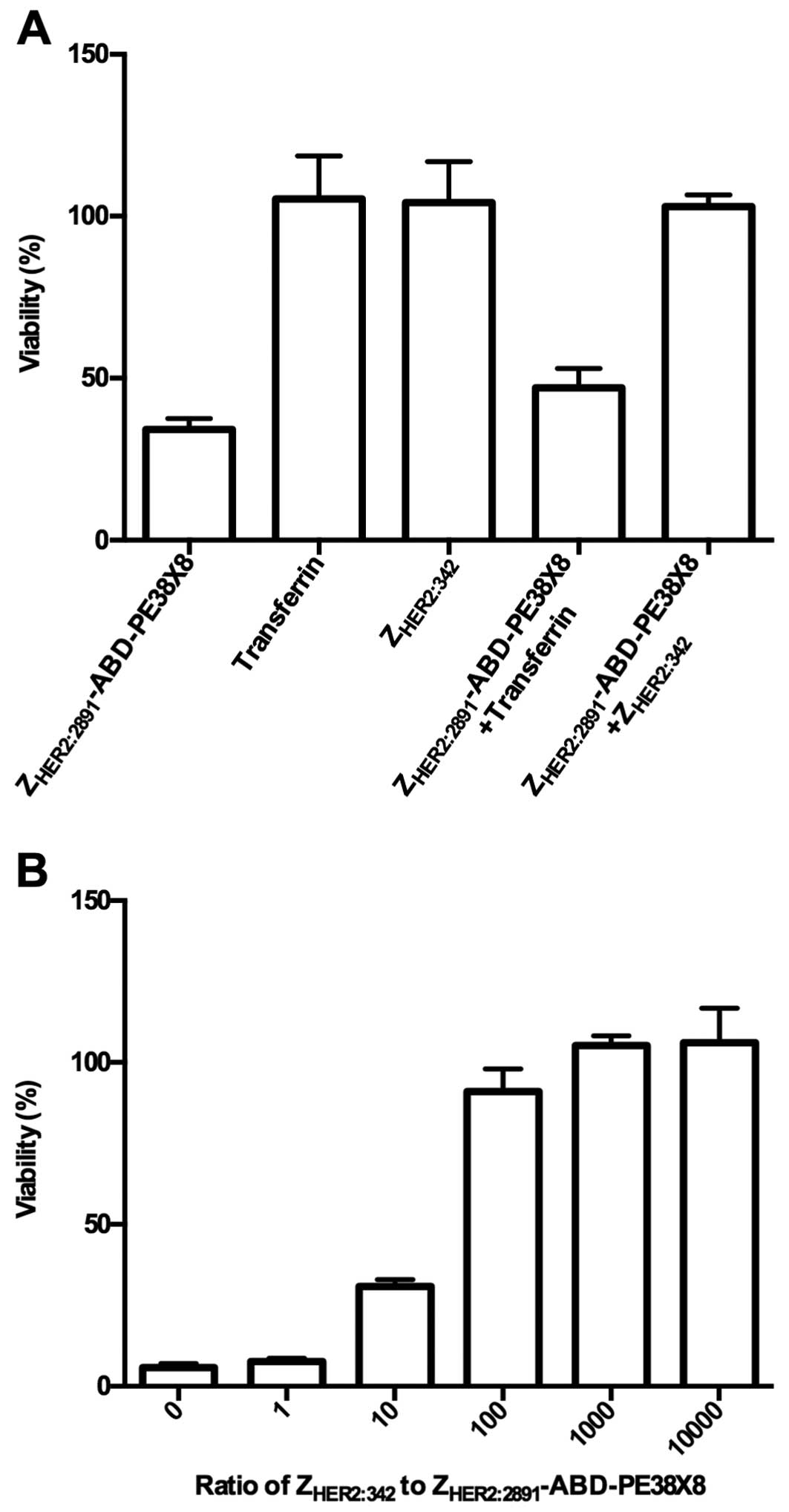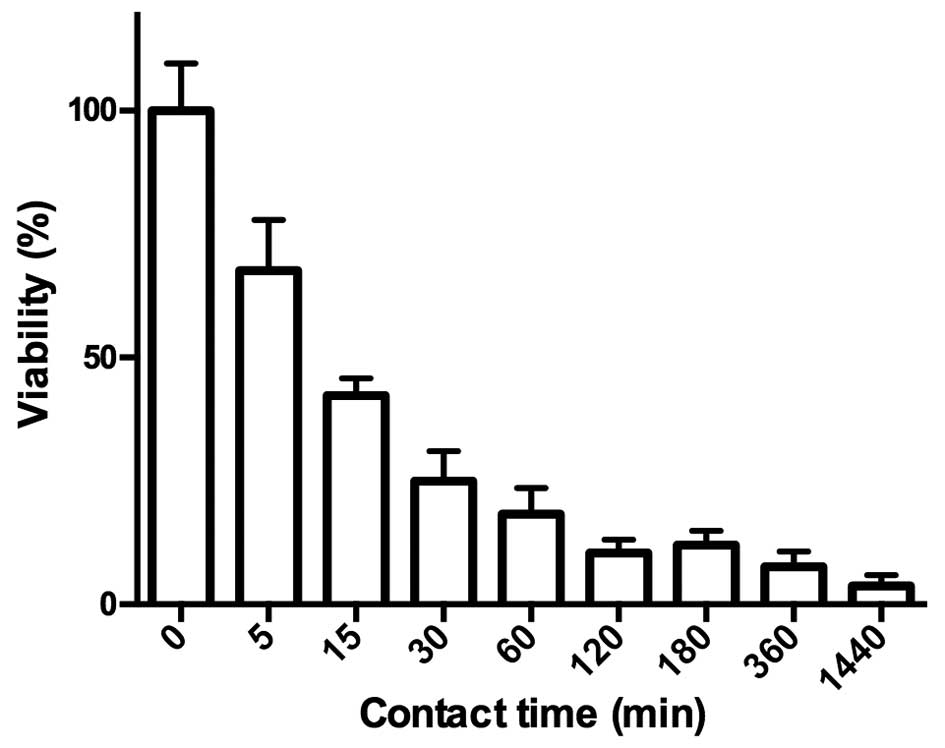|
1
|
Kreitman RJ: Recombinant immunotoxins
containing truncated bacterial toxins for the treatment of
hematologic malignancies. BioDrugs. 23:1–13. 2009. View Article : Google Scholar : PubMed/NCBI
|
|
2
|
Alewine C, Hassan R and Pastan I: Advances
in anticancer immunotoxin therapy. Oncologist. 20:176–185. 2015.
View Article : Google Scholar : PubMed/NCBI
|
|
3
|
Martin-Killias P, Stefan N, Rothschild S,
Plückthun A and Zangemeister-Wittke U and Zangemeister-Wittke U: A
novel fusion toxin derived from an EpCAM-specific designed ankyrin
repeat protein has potent antitumor activity. Clin Cancer Res.
17:100–110. 2011. View Article : Google Scholar
|
|
4
|
Zielinski R, Lyakhov I, Jacobs A, Chertov
O, Kramer-Marek G, Francella N, Stephen A, Fisher R, Blumenthal R
and Capala J: Affitoxin - a novel recombinant, HER2-specific,
anticancer agent for targeted therapy of HER2-positive tumors. J
Immunother. 32:817–825. 2009. View Article : Google Scholar : PubMed/NCBI
|
|
5
|
Zielinski R, Lyakhov I, Hassan M, Kuban M,
Shafer-Weaver K, Gandjbakhche A and Capala J: HER2-affitoxin: A
potent therapeutic agent for the treatment of HER2-overexpressing
tumors. Clin Cancer Res. 17:5071–5081. 2011. View Article : Google Scholar : PubMed/NCBI
|
|
6
|
Mazor R, Vassall AN, Eberle JA, Beers R,
Weldon JE, Venzon DJ, Tsang KY, Benhar I and Pastan I:
Identification and elimination of an immunodominant T-cell epitope
in recombinant immunotoxins based on Pseudomonas exotoxin A. Proc
Natl Acad Sci USA. 109:E3597–E3603. 2012. View Article : Google Scholar : PubMed/NCBI
|
|
7
|
Onda M, Beers R, Xiang L, Nagata S, Wang
Q-C and Pastan I: An immunotoxin with greatly reduced
immunogenicity by identification and removal of B cell epitopes.
Proc Natl Acad Sci USA. 105:11311–11316. 2008. View Article : Google Scholar : PubMed/NCBI
|
|
8
|
Liu W, Onda M, Lee B, Kreitman RJ, Hassan
R, Xiang L and Pastan I: Recombinant immunotoxin engineered for low
immunogenicity and antigenicity by identifying and silencing human
B-cell epitopes. Proc Natl Acad Sci USA. 109:11782–11787. 2012.
View Article : Google Scholar : PubMed/NCBI
|
|
9
|
Onda M, Beers R, Xiang L, Lee B, Weldon
JE, Kreitman RJ and Pastan I: Recombinant immunotoxin against
B-cell malignancies with no immunogenicity in mice by removal of
B-cell epitopes. Proc Natl Acad Sci USA. 108:5742–5747. 2011.
View Article : Google Scholar : PubMed/NCBI
|
|
10
|
King C, Garza EN, Mazor R, Linehan JL,
Pastan I, Pepper M and Baker D: Removing T-cell epitopes with
computational protein design. Proc Natl Acad Sci USA.
111:8577–8582. 2014. View Article : Google Scholar : PubMed/NCBI
|
|
11
|
Carlsson J, Nordgren H, Sjöström J, Wester
K, Villman K, Bengtsson NO, Ostenstad B, Lundqvist H and Blomqvist
C: HER2 expression in breast cancer primary tumours and
corresponding metastases. Original data and literature review. Br J
Cancer. 90:2344–2348. 2004.PubMed/NCBI
|
|
12
|
Ménard S, Casalini P, Campiglio M, Pupa S,
Agresti R and Tagliabue E: HER2 overexpression in various tumor
types, focussing on its relationship to the development of invasive
breast cancer. Ann Oncol. 12(Suppl 1): S15–S19. 2001. View Article : Google Scholar : PubMed/NCBI
|
|
13
|
Ahmed S, Sami A and Xiang J: HER2-directed
therapy: Current treatment options for HER2-positive breast cancer.
Breast Cancer. 22:101–116. 2015. View Article : Google Scholar : PubMed/NCBI
|
|
14
|
Amiri-Kordestani L, Blumenthal GM, Xu QC,
Zhang L, Tang SW, Ha L, Weinberg WC, Chi B, Candau-Chacon R, Hughes
P, et al: FDA approval: Ado-trastuzumab emtansine for the treatment
of patients with HER2-positive metastatic breast cancer. Clin
Cancer Res. 20:4436–4441. 2014. View Article : Google Scholar : PubMed/NCBI
|
|
15
|
Löfblom J, Feldwisch J, Tolmachev V,
Carlsson J, Ståhl S and Frejd FY: Affibody molecules: Engineered
proteins for therapeutic, diagnostic and biotechnological
applications. FEBS Lett. 584:2670–2680. 2010. View Article : Google Scholar : PubMed/NCBI
|
|
16
|
Li J, Lundberg E, Vernet E, Larsson B,
Höidén-Guthenberg I and Gräslund T: Selection of affibody molecules
to the ligand-binding site of the insulin-like growth factor-1
receptor. Biotechnol Appl Biochem. 55:99–109. 2010.PubMed/NCBI
|
|
17
|
Friedman M, Nordberg E, Höidén-Guthenberg
I, Brismar H, Adams GP, Nilsson FY, Carlsson J and Ståhl S: Phage
display selection of Affibody molecules with specific binding to
the extracellular domain of the epidermal growth factor receptor.
Protein Eng Des Sel. 20:189–199. 2007. View Article : Google Scholar : PubMed/NCBI
|
|
18
|
Orlova A, Magnusson M, Eriksson TLJ,
Nilsson M, Larsson B, Höidén-Guthenberg I, Widström C, Carlsson J,
Tolmachev V, Ståhl S, et al: Tumor imaging using a picomolar
affinity HER2 binding affibody molecule. Cancer Res. 66:4339–4348.
2006. View Article : Google Scholar : PubMed/NCBI
|
|
19
|
Kronqvist N, Malm M, Göstring L,
Gunneriusson E, Nilsson M, Höidén Guthenberg I, Gedda L, Frejd FY,
Ståhl S and Löfblom J: Combining phage and staphylococcal surface
display for generation of ErbB3-specific Affibody molecules.
Protein Eng Des Sel. 24:385–396. 2011. View Article : Google Scholar
|
|
20
|
Feldwisch J, Tolmachev V, Lendel C, Herne
N, Sjöberg A, Larsson B, Rosik D, Lindqvist E, Fant G,
Höidén-Guthenberg I, et al: Design of an optimized scaffold for
affibody molecules. J Mol Biol. 398:232–247. 2010. View Article : Google Scholar : PubMed/NCBI
|
|
21
|
Sörensen J, Sandberg D, Sandström M,
Wennborg A, Feldwisch J, Tolmachev V, Åström G, Lubberink M,
Garske-Román U, Carlsson J, et al: First-in-human molecular imaging
of HER2 expression in breast cancer metastases using the
111In-ABY-025 affibody molecule. J Nucl Med. 55:730–735. 2014.
View Article : Google Scholar : PubMed/NCBI
|
|
22
|
Makrides SC, Nygren PA, Andrews B, Ford
PJ, Evans KS, Hayman EG, Adari H, Uhlén M and Toth CA: Extended in
vivo half-life of human soluble complement receptor type 1 fused to
a serum albumin-binding receptor. J Pharmacol Exp Ther.
277:534–542. 1996.PubMed/NCBI
|
|
23
|
Jonsson A, Dogan J, Herne N, Abrahmsén L
and Nygren P-A: Engineering of a femtomolar affinity binding
protein to human serum albumin. Protein Eng Des Sel. 21:515–527.
2008. View Article : Google Scholar : PubMed/NCBI
|
|
24
|
Orlova A, Jonsson A, Rosik D, Lundqvist H,
Lindborg M, Abrahmsen L, Ekblad C, Frejd FY and Tolmachev V:
Site-specific radiometal labeling and improved biodistribution
using ABY-027, a novel HER2-targeting affibody
molecule-albumin-binding domain fusion protein. J Nucl Med.
54:961–968. 2013. View Article : Google Scholar : PubMed/NCBI
|
|
25
|
Tolmachev V, Orlova A, Pehrson R, Galli J,
Baastrup B, Andersson K, Sandström M, Rosik D, Carlsson J,
Lundqvist H, et al: Radionuclide therapy of HER2-positive
microxenografts using a 177Lu-labeled HER2-specific Affibody
molecule. Cancer Res. 67:2773–2782. 2007. View Article : Google Scholar : PubMed/NCBI
|
|
26
|
Hopp J, Hornig N, Zettlitz KA, Schwarz A,
Fuss N, Müller D and Kontermann RE: The effects of affinity and
valency of an albumin-binding domain (ABD) on the half-life of a
single-chain diabody-ABD fusion protein. Protein Eng Des Sel.
23:827–834. 2010. View Article : Google Scholar : PubMed/NCBI
|
|
27
|
Andersen JT, Pehrson R, Tolmachev V, Daba
MB, Abrahmsén L and Ekblad C: Extending half-life by indirect
targeting of the neonatal Fc receptor (FcRn) using a minimal
albumin binding domain. J Biol Chem. 286:5234–5241. 2011.
View Article : Google Scholar :
|
|
28
|
Gunneriusson E, Nord K, Uhlén M and Nygren
P: Affinity maturation of a Taq DNA polymerase specific affibody by
helix shuffling. Protein Eng. 12:873–878. 1999. View Article : Google Scholar : PubMed/NCBI
|
|
29
|
Sandersjöö L, Jonsson A and Löfblom J: A
new prodrug form of Affibody molecules (pro-Affibody) is
selectively activated by cancer-associated proteases. Cell Mol Life
Sci. 72:1405–1415. 2015. View Article : Google Scholar
|
|
30
|
Tolmachev V, Hofström C, Malmberg J,
Ahlgren S, Hosseinimehr SJ, Sandström M, Abrahmsén L, Orlova A and
Gräslund T: HEHEHE-tagged affibody molecule may be purified by
IMAC, is conveniently labeled with
[99mTc(CO)3]+, and shows improved
biodistribution with reduced hepatic radioactivity accumulation.
Bioconjug Chem. 21:2013–2022. 2010. View Article : Google Scholar : PubMed/NCBI
|
|
31
|
Hassan R, Bullock S, Premkumar A, Kreitman
RJ, Kindler H, Willingham MC and Pastan I: Phase I study of SS1P, a
recombinant anti-mesothelin immunotoxin given as a bolus I.V.
infusion to patients with mesothelin-expressing mesothelioma,
ovarian, and pancreatic cancers. Clin Cancer Res. 13:5144–5149.
2007. View Article : Google Scholar : PubMed/NCBI
|
|
32
|
Kuan CT, Pai LH and Pastan I: Immunotoxins
containing Pseudomonas exotoxin that target LeY damage human
endothelial cells in an antibody-specific mode: Relevance to
vascular leak syndrome. Clin Cancer Res. 1:1589–1594.
1995.PubMed/NCBI
|



